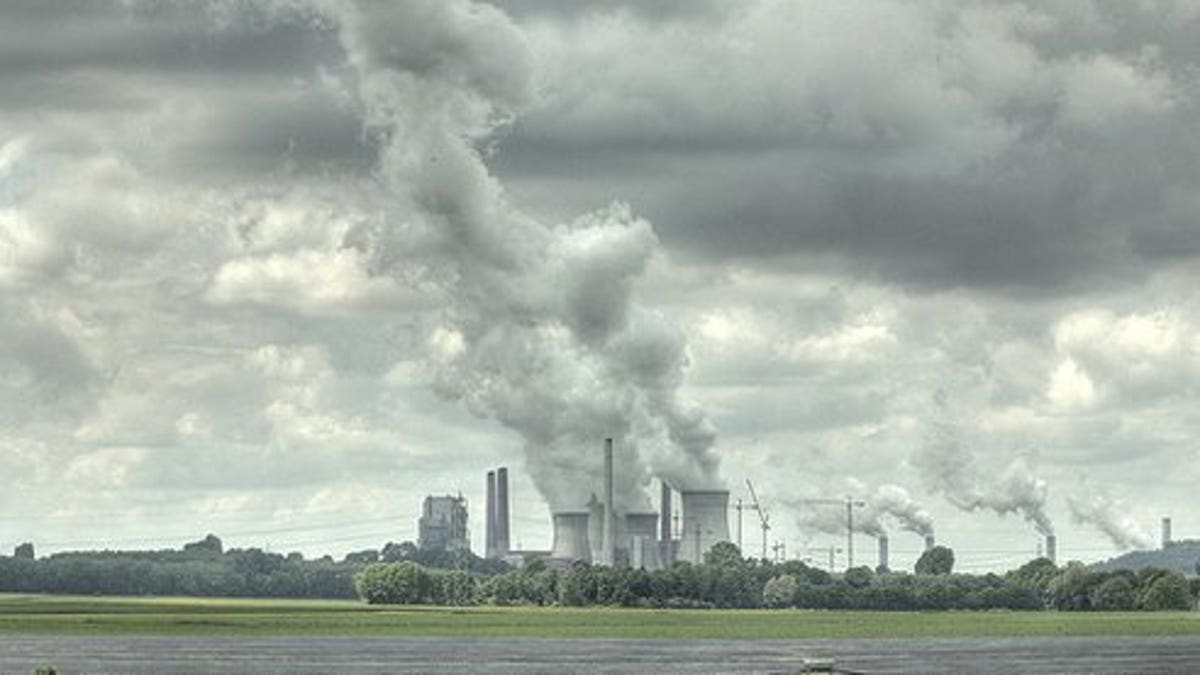
There is no such thing as “clean coal.” The very words convey a myth that has no substance. Not one single coal-burning power plant in the world is “clean.” Every coal plant gives off a multitude of toxins, and these toxins pollute soil, water and air, and contribute to disease and death. So even though we need and want electricity, let’s stop pretending that coal is clean.
Today, the United States, China, Poland, Australia, South Africa and many other countries are addicted to coal. Without coal-fired power plants, these nations would be unable to meet everyday energy demands. Yet according to a report backed by the U.S.-based medical group Physicians for Social Responsibility and authored by Dr. Alan Lockwood, a professor of neurology at the University at Buffalo, pollution from the burning of coal kills tens of thousands of people each year, due to asthma, chronic pulmonary obstruction, emphysema, heart attack, stroke and cancer.
Recent efforts championed by the coal industry depict environmental policies that demand cleaner coal plants as unnecessarily burdensome to Americans who may have to pay more for electricity. But the multiple billions of dollars of health care costs that are incurred every year due to dirty coal far exceed any cost increases we might see in our electric bills.
Coal mining itself is fundamentally hazardous to health, causing respiratory diseases in miners and polluting the environment around coal mining operations. Soil, water and air are polluted in the process of mining, and millions of tons of toxins are released into the environment. This affects anybody who eats food, breathes air, or drinks water.
The Centers for Disease Control and Prevention describes “an epidemic” of respiratory diseases among coal miners, due to regular inhalation of deadly toxins and particle matter. According to a report in the journal Science Daily, people who live in coal mining communities have a 70 percent risk of developing kidney disease, a 64 percent increased risk of developing chronic pulmonary obstructive disease, and are 30 percent more likely to develop high blood pressure than those who do not live in coal-mining communities. In addition, communities near mountaintop coal mines have inordinately high rates of birth defects. These health disorders not only cause tremendous grief and sorrow, but they are extremely expensive as well.
Burning coal is an even greater hazard, with millions of tons of mercury, sulfur dioxide, nitrogen oxides and particle matter contaminating the atmosphere and contributing to a host of toxin-related diseases. Ash from coal plants is especially concentrated in toxic heavy metals, and disposal of this waste is consistently undertaken with few or no environmental safeguards. Contaminated water results in contaminated fish, and when people eat the fish, the toxins from coal-polluted water enter the body.
In another report conducted by the Environmental Defense Fund, researchers estimated as many as 10,000 deaths associated with coal-fired plants in the U.S. These deaths are due to respiratory and cardiovascular diseases caused by coal pollution. Yet another report from Physicians for Social Responsibility detailed that coal is the number one source of greenhouse gas emissions in the US and contains over 50 identified toxins that pollute the environment and can cause grave health disorders.
Another report from the National Academy of Sciences concluded that coal-fired plants cost the U.S. $62 billion per year in environmental and health costs. Yet another report in The New York Times revealed that coal plants regularly dump thousands of tons of highly toxic waste into public drinking water sources.
Will our policy-makers continue to crow for coal as more children die from asthma? As our rivers and soil and air are increasingly laden with deadly toxins, will the coal industry continue to pander the false notion of “clean coal” to an ever imperiled public? At what point will sober-minded policy makers assess the real costs of coal as they relate to high rates of disease and death?
Earlier in our nation’s history, open sewers ran through cities. But eventually people realized that open sewers were sources of diseases. As modern sanitation efforts were implemented, rates of diseases related to hygiene went down. The burning of coal is an archaic, filthy and polluting industry that causes high rates of disease and will never be “clean.”
For the sake of human health, and to reduce multiple billions of dollars in burdensome costs of treating coal-related diseases, it’s time to turn to cleaner, safer options, including wind, solar and other non-polluting energy-generating technologies. Coal plants are today’s open sewers. Let’s enter the future, and save lives and the environment.
Chris Kilham is a medicine hunter who researches natural remedies all over the world, from the Amazon to Siberia. He teaches ethnobotany at the University of Massachusetts Amherst, where he is Explorer In Residence. Chris advises herbal, cosmetic and pharmaceutical companies and is a regular guest on radio and TV programs worldwide. Chris is the author of 14 books, including Hot Plants, Tales from the Medicine Trail, Kava: Medicine Hunting in Paradise, The Whole Food Bible, Psyche Delicacies, and the international best-selling yoga book, The Five Tibetans. Richard Branson features Chris in his new book, Screw Business as Usual. His field research is largely sponsored by Naturex of Avignon, France. Read more at www.MedicineHunter.com.




















